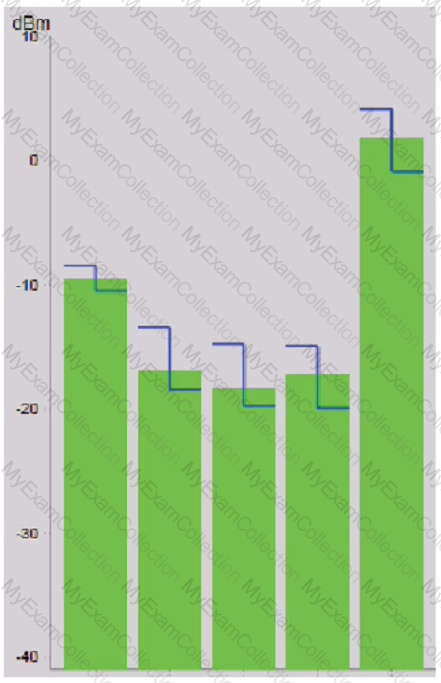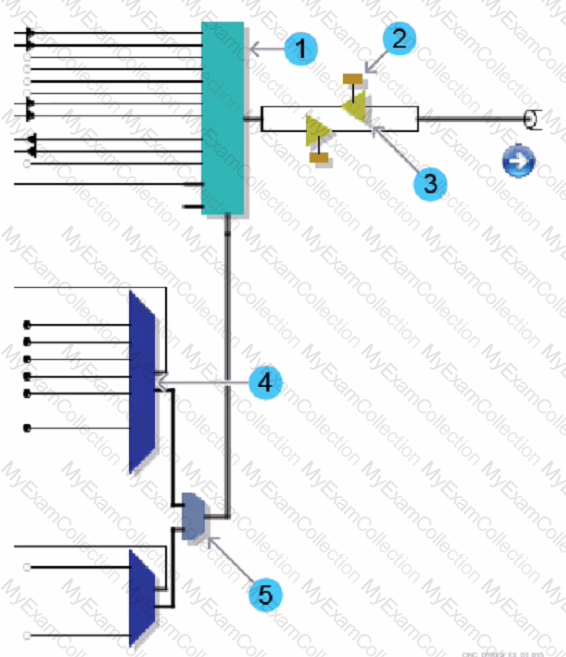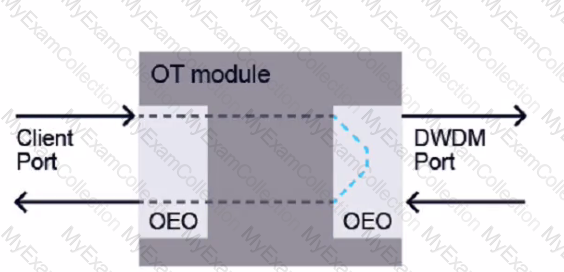Which of the following statements about using Nokia product documentation in the troubleshooting process is TRUE?
Consider the exhibit which shows an EPT Power ManagementReport for an ingress amplifier.
What is the available output optical power range?

Consider the exhibit. What do the different colored green columns indicate?

What is the default severity level for a Threshold Crossing Alert (TCA) alarm?
Suppose a node is experiencing a little unexpected attenuation over the Optical Supervisory Channel (OSC) transmit direction. Which of the following statements is FALSE?
Which of the following statements about the alarm masking mechanism is TRUE?
Consider the exhibit which shows part of an EPT Schematic View. Which number refers to the Wavelength Router (WR8-88) block?

Which of the following statements best describes the Forward Error Correction (FEC) technique?


